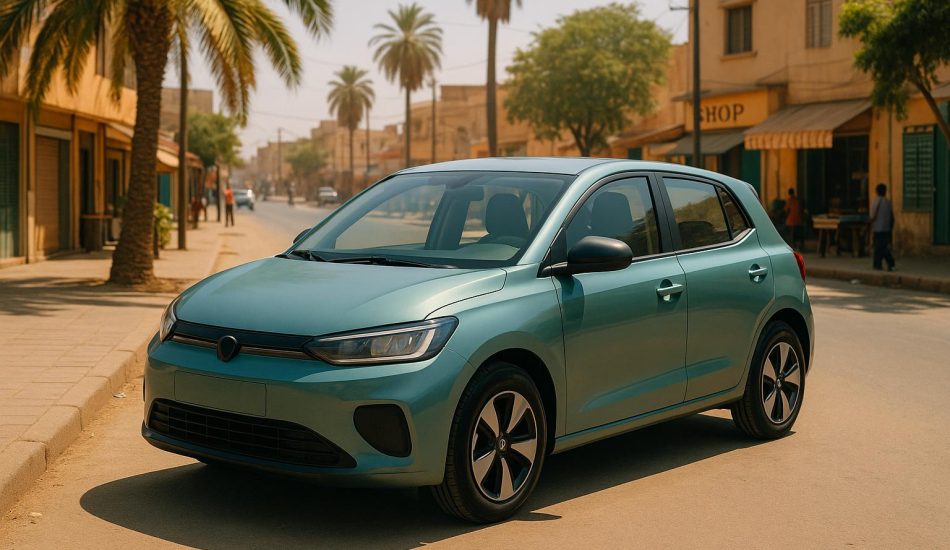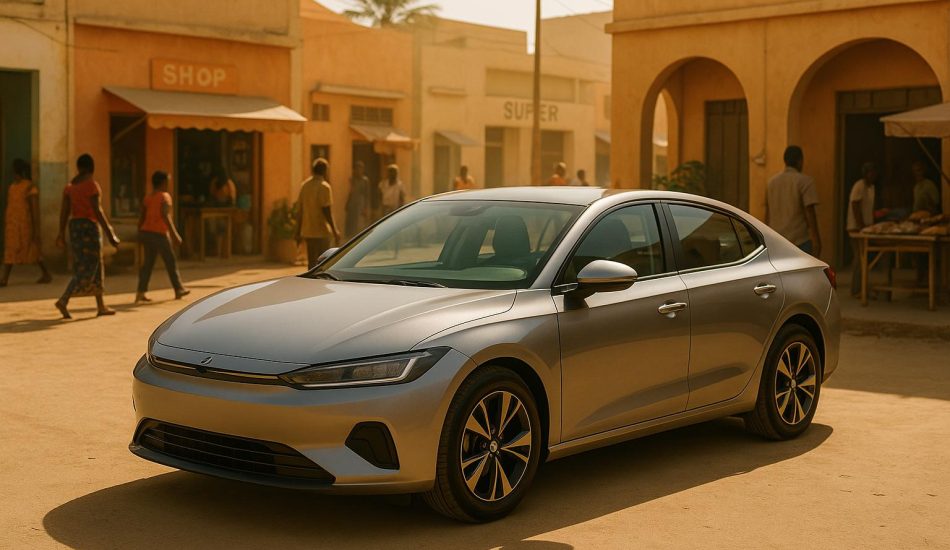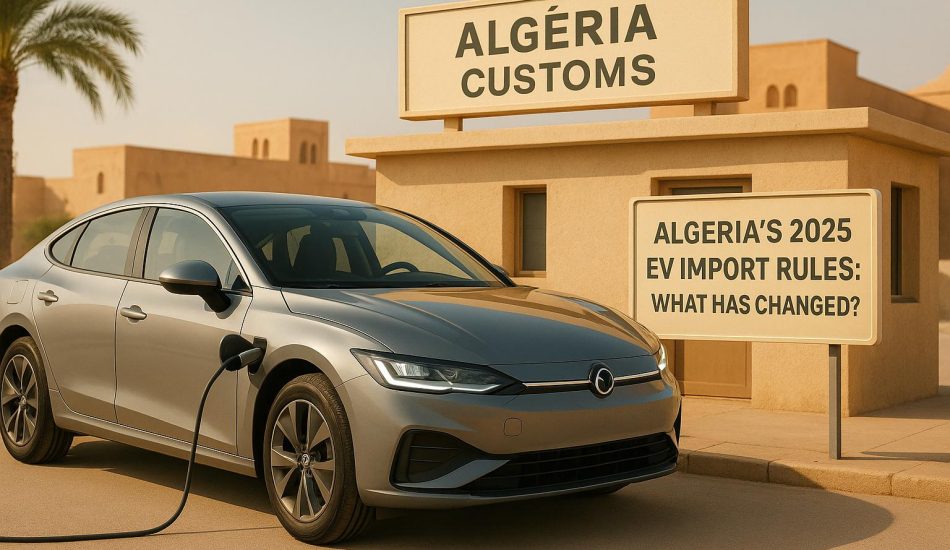
Yes, but it depends on the region. EV charging infrastructure in Africa is growing, but availability varies widely by location. Here’s a quick breakdown:
- Southern Africa: Most developed network with 400+ public chargers, including solar-powered stations.
- North Africa: Rapid growth, with Morocco and Egypt leading (400+ stations in Morocco, 238 in Egypt).
- East Africa: Focus on e-buses and expanding networks, especially in Kenya.
- West Africa: Ghana leads with multiple hubs, but grid reliability remains a challenge.
- Central Africa: Emerging market using solar-powered solutions to address limited infrastructure.
Key Challenges:
- Grid reliability: Frequent outages disrupt charging.
- Rural access: 600M+ people lack electricity; solar-powered solutions are emerging.
- High costs: $1B needed for network expansion by 2025.
Solutions:
- Solar charging: Off-grid systems like TotalEnergies‘ solar stations and Zambia’s mini-grids are filling gaps.
- Mobile chargers: Flexible solutions for areas without permanent infrastructure.
- Battery swaps: Popular in regions like Rwanda for motorcycles.
Planning Tip: Research charging options by region and consider backup plans like portable chargers or battery swaps for remote areas.
We visit South Africa’s first completely off-grid EV charging station
Current State of EV Charging in Africa
Africa’s electric vehicle (EV) market is expanding, but it faces a range of challenges when it comes to charging infrastructure. The Middle East and Africa (MEA) EV charging market, currently valued at $162.5 million in 2024, is expected to grow to $380.7 million by 2029, with an annual growth rate of 18.56%.
Main Infrastructure Barriers
The road to widespread EV adoption in Africa is riddled with hurdles, particularly when it comes to infrastructure. Here’s a snapshot of the key barriers:
| Barrier | Impact | Current Status |
|---|---|---|
| Grid Reliability | Frequent power outages disrupt charging availability | Backup systems are limited |
| Rural Access | Nearly 600 million people lack dependable electricity | Solar-powered solutions are starting to emerge |
| Setup Costs | An estimated $1 billion is needed to expand charging networks by 2025 | Funding remains a challenge |
| Technical Expertise | Limited local manufacturing and technical know-how | Progress is slow |
"We don’t have electricity in our village…an electric scooter would be the ‘perfect solution’", says Teshale Natnael, a motorcycle taxi rider.
Beyond infrastructure, the high cost of EVs remains a significant obstacle, driving interest in alternative solutions like off-grid solar charging.
Solar Power Solutions
To address the twin challenges of unreliable grids and high costs, off-grid solar charging is stepping into the spotlight. Companies and governments are increasingly turning to solar-powered systems to fill the gaps in traditional infrastructure.
- TotalEnergies: Outfitted 1,000 of its 4,800 petrol stations in Africa with solar generators, working with EV startups like Ampersand to offer charging services.
- SLS Energy in Zambia: Partnered with Ampersand to create a 120kWh mini-grid powered by repurposed e-bike batteries. This system can supply energy to over 100 rural homes for two days on a single charge.
"Once this off-grid energy is scaled up, e-mobility will become pervasive. But it’s not just about e-bikes or EVs, but also being able to power surrounding commercial activity", explains Senegalese Venture Capitalist Toffene Kama.
Recent advancements in solar-powered EV charging include:
- CHARGE: Launched South Africa’s first off-grid solar EV station in Wolmaransstad.
- Kofa in Ghana: Rolled out battery swap stations for EVs.
- Zambia’s Solar Initiative: The government signed a deal with SkyPower Global to develop 1,000 megawatts of solar energy by March 2025.
These solar innovations are not only practical but also environmentally impactful. For instance, electric motorcycles powered by renewable energy emit 98% fewer emissions than their gasoline counterparts, making them a cleaner transportation option for Africa’s growing needs.
EV Charging by Region
The EV charging landscape across Africa reflects the continent’s diverse approaches to tackling infrastructure challenges. Each region has its own unique strategies and progress in building out charging networks.
Southern Africa’s Charging Network
South Africa stands as a leader in EV charging infrastructure on the continent, boasting around 400 public charging stations as of now. GridCars operates 450 public charging points, while Rubicon manages 110 stations. Rubicon has also reported a doubling of charging sessions in 2024, signaling growing adoption .
"By 2019, any EV with a 200km or greater range could drive from Johannesburg to Cape Town using our network", said Winstone Jordaan, CEO of GridCars.
East Africa’s Progress
Kenya has positioned itself at the forefront of East Africa’s EV charging efforts. By early 2025, the country had registered 9,047 electric vehicles, 90% of which are electric motorcycles. Kenya Power has been actively expanding the charging network with the following developments:
| Initiative | Details | Timeline |
|---|---|---|
| Initial Installation | 45 charging stations across six counties | 2024–2025 |
| Investment | $1.9 million (KSh258 million) over three years | |
| Current Usage | 350,000 units billed monthly from e-mobility accounts |
These efforts signal Kenya’s commitment to supporting a broader shift toward electric mobility.
"Kenya Power is committed to enable the country’s transition to electric mobility to catalyze the reduction of carbon emissions", stated Dr. (Eng.) Joseph Siror, Managing Director & CEO of Kenya Power.
North Africa’s Infrastructure
In North Africa, Morocco leads the way by integrating EV charging stations into existing fuel station networks. These stations are strategically placed in urban areas and along major highways, although the total number of stations remains lower than in Southern Africa.
West Africa’s Charging Options
West Africa is following a similar path to North Africa by focusing on private-sector efforts to grow its EV charging network. Nigeria and Ghana are emerging as key hubs for EV charging, despite ongoing challenges with grid reliability. For context, the System Average Interruption Disruption Index (SAIDI) for sub-Saharan Africa is 39.30, compared to just 0.87 in OECD high-income countries.
Central Africa’s Solutions
In Central Africa, solar-powered charging stations are becoming a practical solution, particularly for rural areas where grid access is limited. The table below highlights the costs and best use cases for different types of charging stations:
| Station Type | Installation Cost | Best Use Case |
|---|---|---|
| Fast Charging | $50,000 – $200,000+ | Urban centers, highways |
| Medium Charging | $10,000 – $50,000 | Commercial areas |
| Slow Charging | A few hundred dollars to $10,000 | Residential, rural areas |
Investor interest in the region is also picking up. A McKinsey report noted that over 20 start-ups in the sub-Saharan EV ecosystem secured more than $25 million in funding in 2021. This indicates growing confidence in the potential for EV infrastructure development across the region.
Charging Methods for Remote Locations
Expanding charging infrastructure in remote areas often requires creative solutions to address the unique challenges posed by these regions. Here’s a look at some methods that complement existing networks.
Mobile Charging Units
Mobile charging units are a quick and flexible way to provide power in areas where permanent infrastructure is unavailable. These units, such as EVESCO‘s mobile DC fast chargers, are compatible with various charging standards, including NACS, CHAdeMO, CCS, and GB/T. They don’t require permits, making them ideal for temporary or emergency use.
| Application | Benefits | Typical Usage |
|---|---|---|
| Emergency Response | Quick setup for stranded vehicles | Immediate charging |
| Construction Sites | Power for work vehicles on-site | Project duration |
| Events & Festivals | Charging flexibility for attendees | Short-term deployment |
| Auto Dealerships | Efficient charging for multiple vehicles | Daily operations |
"Our fleet services adapt to fit your business’ unique requirements, giving you the freedom to optimize your fleet’s performance, wherever you need it." – SparkCharge
Solar Charging Stations
Solar-powered chargers are another effective option for remote locations, offering self-sufficient, off-grid energy solutions. These systems rely on several components to function:
- Solar panel array
- Mounting structure
- Charge controller
- Power inverter
- Battery storage
- EV Supply Equipment (EVSE)
- Monitoring system
The cost of installing a solar charging station typically ranges from $0.90 to $1.50 per watt of capacity. Depending on energy availability, these systems can operate in solar-only, hybrid, or power-boost modes, ensuring flexibility in different conditions.
Additionally, advancements in Vehicle-to-Grid (V2G) technology are opening new possibilities for integrating solar power with dynamic energy sharing.
Power Sharing Systems
V2G technology allows electric vehicles to function as mobile energy storage units, enabling power sharing in remote areas. This bidirectional charging can reduce peak grid demand by up to 20% and increase the use of renewable energy by 30%.
For these systems to work effectively, microgrids combining solar power and battery storage must use advanced software to manage energy flows efficiently.
"You need control of all the energy flows – from the sun, from the battery, from the grid, to the load… You have to manage all of that carefully, and you have to have intimate control of the charger to be able to do a good job of that." – Tom McCalmont, CEO of Paired Power
According to BloombergNEF, by 2040, there could be 722 million passenger EVs worldwide capable of serving as mobile energy storage units. This highlights the growing role of power sharing systems in improving access to charging infrastructure, especially in remote regions like Africa.
sbb-itb-99e19e3
Planning for EV Travel in Africa
New Charging Projects
On January 23, 2022, Egypt saw the launch of its largest EV charging station, a collaboration between MB for Engineering and Wataniya Petroleum. This station can charge up to 14 vehicles at the same time, with a capacity exceeding 330 kWh. MB for Engineering also announced plans to expand its network to cover Egypt’s top five governorates by mid-2022.
In South Africa, the existing EV charging network earned global recognition in 2020, ranking fifth worldwide for public charging stations relative to the number of EVs.
These projects are paving the way for more practical and accessible EV travel across Africa.
Trip Planning Guide
When planning your EV trip, it’s essential to match your route to the strengths of the region’s infrastructure. Here’s a quick overview:
| Region | Infrastructure Status | Key Considerations |
|---|---|---|
| South Africa | Most developed network | High station availability in urban centers |
| Egypt | Expanding rapidly | Over 380 certified EVs as of February 2022 |
| Rwanda | Focus on e-motorcycles | Battery swap stations available |
Backup Charging Plans
Given the uneven development of charging infrastructure across Africa, having a backup plan is crucial to avoid disruptions. Rwanda offers an excellent example of alternative solutions with Ampersand’s electric motorcycle fleet. Since May 2019, this fleet has traveled over 1.3 million kilometers using a network of battery swap stations.
Here are some strategies to ensure you’re prepared:
- Primary Option: Carry portable charging units that meet local standards.
- Secondary Option: Take advantage of battery swap stations where available.
- Emergency Option: Use adapters to connect to the local grid when necessary.
As charging networks continue to grow – like Egypt’s expanding efforts – careful planning becomes even more critical for smooth and successful EV travel in Africa.
Conclusion
The development of electric vehicle (EV) charging infrastructure in Africa varies significantly across regions, with some countries making more strides than others. South Africa stands out as a leader, boasting the continent’s most advanced charging network. In fact, it earned international recognition in 2020 for having one of the best ratios of public charging stations to EVs.
Egypt has also made notable progress. By January 2022, the country unveiled a 330 kWh charging station capable of servicing 14 vehicles at once. By the following month, more than 380 EVs had been certified, signaling growing adoption and infrastructure expansion.
Rwanda, on the other hand, has taken a unique approach by focusing on electric motorcycles and battery swap stations. Ampersand, a key player in this space, has logged over 1.3 million kilometers with its electric fleet since May 2019. This highlights a practical solution tailored to local transportation needs.
These examples underline the importance of understanding regional differences in EV charging options. For instance, Southern Africa benefits from reliable grid-based charging, while other parts of the continent lean on portable or solar-powered alternatives. EV owners should plan their routes carefully and consider backup charging options as the infrastructure continues to evolve.
FAQs
What challenges are slowing the growth of EV charging infrastructure in Africa, and how are they being addressed?
The expansion of EV charging infrastructure in Africa comes with its own set of challenges. One major issue is the lack of reliable data, which hampers policymakers and investors from making well-informed decisions. On top of that, the high price of new electric vehicles, the dominance of older fuel-powered cars, and the significant investments required to establish charging networks add to the complexity.
Despite these obstacles, creative solutions are beginning to take shape. For instance, battery swapping stations for electric motorcycles are being introduced to cut costs and ease concerns about driving range. Alongside this, specific policies and infrastructure projects are being rolled out to encourage the shift to EVs. Success in this area hinges on collaboration – governments, private companies, and investors must work together to accelerate progress and make EVs a viable option across the continent.
How can solar-powered charging address the challenges of limited grid-based charging in Africa?
Solar-powered charging provides a practical and eco-friendly option for regions in Africa where consistent access to electricity is a challenge. By using solar energy, these charging stations work independently of the power grid, making them especially suitable for rural and remote areas.
This solution goes beyond just offering electric vehicle charging – it aligns with efforts to promote renewable energy use. For off-grid communities, solar-powered chargers address both transportation and energy challenges in one go. They also cut reliance on fossil fuels and help reduce long-term costs, paving the way for broader electric vehicle adoption across the continent.
What should EV owners know about charging their vehicles while traveling across Africa?
Traveling Across Africa in an Electric Vehicle (EV)
Exploring Africa in an electric vehicle (EV) can be an incredible adventure, but it does require some extra planning. Charging infrastructure varies widely across the continent. For instance, South Africa has a more established network of charging stations, while many other regions still face hurdles like scarce public chargers and inconsistent electricity supply.
To make your journey smoother, think about bringing along portable chargers or even looking into solar-powered charging solutions for more remote areas. It’s also a good idea to map out charging stations along your route ahead of time and schedule your stops strategically. By staying informed about the infrastructure in each region, you’ll be better equipped to enjoy the unique experience of driving an EV across Africa.




